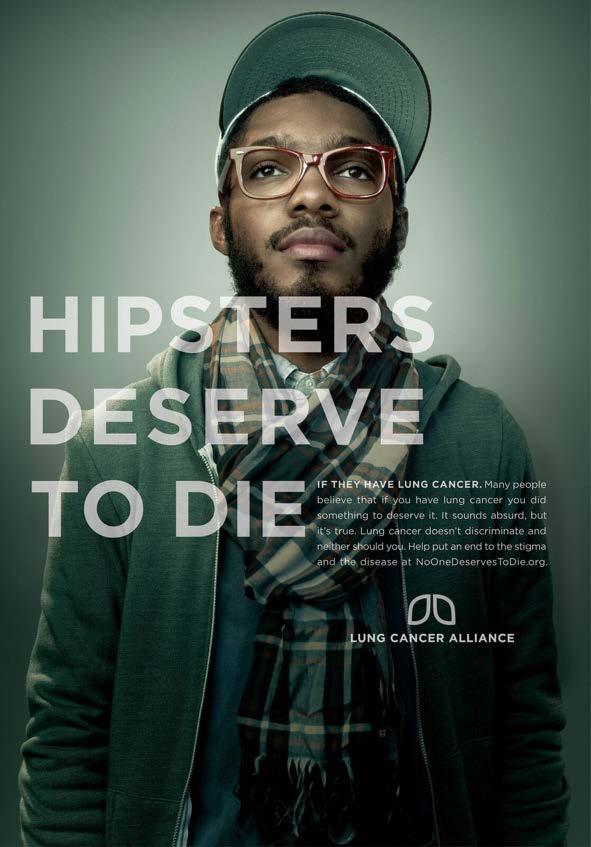
Top
Companies Leading the Revolution in


Companies Leading the Revolution in



Designer
Distributor
ancer care is entering a transformative era—driven by rapid advancements in science and technology. From AI-powered diagnostics and genomic profiling to immunotherapy and real-time monitoring, these innovations are reshaping how cancer is detected, understood, and treated.
This special edition of Top Companies Leading the Revolution in Cancer Diagnosis and Treatment highlights the pioneers at the forefront of this change. These companies are not just developing tools—they are delivering solutions that enable earlier detection, greater precision, and more personalized care.
Featured among them is our Cover Story, Creatv Bio, whose groundbreaking work in cancer detection and diagnosis is redefining how care is delivered—saving lives through earlier intervention and greater accuracy.
Though cancer remains a major global health challenge, a significant shift is underway in how it’s detected and treated. The companies featured in this issue are driving that transformation—leveraging innovations like precision oncology, gene editing, and AI-driven diagnostics to create real, life-saving impact.

Editor-in-chief Sugandha Sharma
This edition serves not only as a resource but also as a source of inspiration. Behind every technological advance lies a deeper story—a commitment to transforming the lives of patients, families, and communities worldwide. These are not just corporate milestones; they are human achievements.
For healthcare professionals, these breakthroughs represent more than scientific progress—they are practical innovations designed to enhance accuracy, efficiency, and outcomes in clinical care. What unites all the leaders featured here is a shared commitment to collaboration—working alongside clinicians and researchers to ensure that innovation translates into real-world progress.
As this new era of oncology unfolds, it is being shaped by the collective efforts of researchers, technologists, and medical professionals. Together, the global cancer care community is advancing from treatment toward transformation—charting a future where cancer is not feared but managed with precision and compassion.
This issue celebrates not just technological achievement, but a global movement toward faster, smarter, and more effective cancer care.
Welcome to a new era of oncology. Welcome to the revolution.
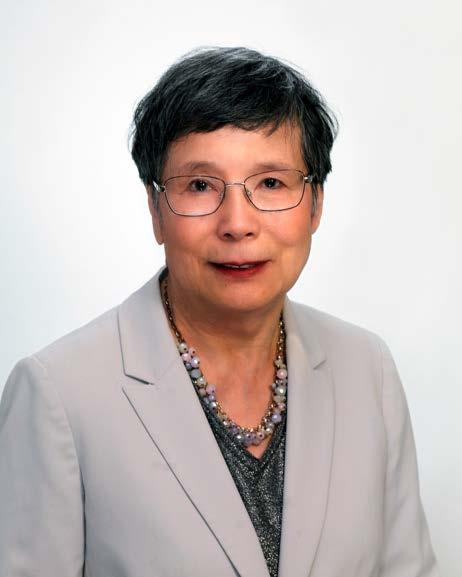


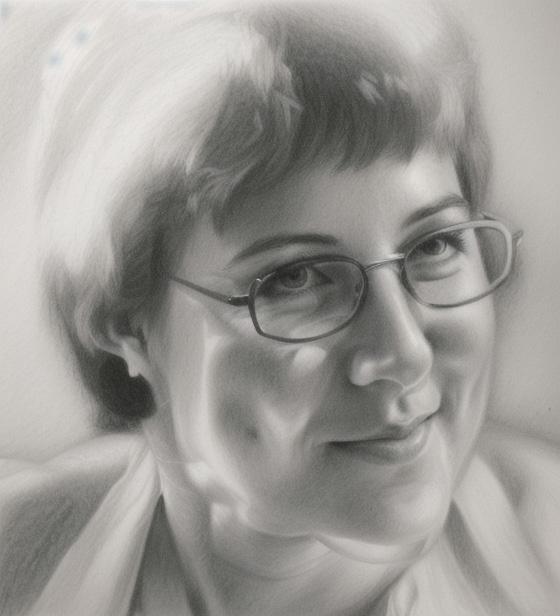


Cha-Mei Tang Founder & CEO Creatv Bio


Cancer care is evolving rapidly, with early detection and precise diagnostics playing a crucial role in improving patient outcomes. As cancer remains one of the leading causes of death worldwide, innovative solutions are needed to provide accurate, timely, and accessible diagnostics. Creatv Bio, a division of Creatv MicroTech, Inc., is at the forefront of this transformation, revolutionizing cancer screening and diagnosis with cutting-edge blood-based technologies.
Creatv MicroTech incorporated in Delaware in 2000 and is headquartered in Potomac, MD, Creatv Bio is dedicated to advancing cancer care by providing oncologists with essential insights that enable early detection, continuous monitoring, and personalized treatment strategies. Under the visionary leadership of Dr. Cha-Mei Tang (Founder & CEO) and Daniel L. Adams (Chief Scientific Officer), the company has pioneered groundbreaking diagnostic innovations that address some of the biggest challenges in oncology. By leveraging novel biomarkers and state-of-the art microfiltration technology, Creatv Bio is redefining the future of cancer diagnostics—ensuring that patients receive the best possible care at the right time.
Dr. Cha-Mei Tang’s journey to founding Creatv Bio is a testament to her passion for scientific innovation. A graduate of the Massachusetts Institute of Technology with bachelor’s, master’s, and Sc.D. (equivalent to Ph.D.) degrees, Dr. Tang has been curious about all aspects of science, life, business, and even marketing. Dr. Tang initially spent 18 years performing theoretical research on relativistic electron beams and free electron lasers. Then, she decided to try something different. Seeking a new challenge, she founded Creatv MicroTech to advance microfabrication technologies to improve x-ray imaging.
Creatv is still involved in various types of microfabrication research and services. Initially,
Creatv was focused on research and scientific developments primarily funded by research grants, but rather than commercialization. Soon afterward, Creatv expanded to the development of biological applications.
Daniel L. Adams, the company’s CSO, played a crucial role in identifying and studying a unique biomarker found in Creatv Bio’s blood test for cancer. He was the first to develop a broad spectrum of diagnostic applications based on this novel biomarker and his pioneering work has reshaped the landscape of cancer detection and treatment.
What started as a microfabrication company soon took on a greater purpose. Dr. Cha-Mei Tang’s scientific expertise and Daniel L. Adams’ discovery of novel biomarkers catalyzed the formation of Creatv Bio, a company dedicated to redefining cancer diagnostics and improving patient care.
Since 2010, the company has been focused on developing a blood test for cancer screening and diagnostics, utilizing its microfabrication filters, called CellSieve™, to collect Circulating Tumor Cells (CTCs) from the blood of cancer patients. This became the Creatv Bio Division, which now represents 95% of the company.
Creatv Bio’s Breakthrough Technologies
Creatv Bio provides services to i) individuals and oncologists, and ii) pharmaceutical companies developing cancer drugs and therapies, enabling them to quickly determine the effectiveness of their drugs. The company has a research laboratory in New Jersey, and is establishing a CLIA lab to provide service to the general public.
Creatv Bio’s advancements are driven by two breakthrough technology innovations: CellSieve™ Microfilters and Cancer-Associated Macrophage-Like Cells (CAMLs).
-CellSieve™ Microfilters: The microfilter was developed to capture cancer-associated cells from blood that are larger than red blood cells and most white blood cells. It has a 7-8 micron pore diameter and 180,000 pores within a 9 mm
diameter area. It has very low background autofluorescence, enabling high-quality imaging of the cells, and enabling companion diagnostics. It can process 15 mil of the sample, 7.5 mil of whole blood mixed with 7.5 mil of fixation buffer, in just 3 minutes. The process removes all red blood cells and 99.99% of white blood cells. Cells larger than 10 microns and clusters cannot go through the pores, and they are captured on top of the filter. The cells on the filter are stained by biomarkers of interest by fluorescent dyes.
-Cancer-Associated Macrophage-Like Cells (CAMLs): When they processed the first patient samples, they captured Circulating Tumor Cells (CTCs,) and a lot of large strange-looking cells. However, they could not find a single publication on the clinical applications of those cells. Daniel Adams performed systematic and accurate analysis of those strange cells and showed that they were not CTCs, but they expressed macrophage markers. They named those cells
CancerAssociated Macrophage-like Cells (CAMLs) and published them in the PNAS journal in 2014. CAMLs are typically 25-300 microns in size. They are polynucleated as the result of tumor cells they engulfed. When they are small, they are round or oval-shaped. They are often found as large rod

shapes. Some of them have one tail or two tails on opposite sides of the cells. The tails can be very long. They have processed blood from more than 30 different tumor types and found CAMLs in the blood of all those different tumor types. The general characteristics of the CAML cells are the same, independent of the type of cancer. They even find CAMLs in stage 1 of all those cancers. However, they have not observed CAMLs in healthy controls.
Daniel L. Adams Chief Scientific Officer Creatv Bio
In the last 2-3 years, other researchers began to publish on CAMLs often giving them different names, which independently validated their work
-LifeTracDx®: A Comprehensive Blood Test for Cancer Creatv Bio’s
LifeTracDx® blood test applies to all types of cancer, (solid tumors and blood cancers) and all stages.
LifeTracDx® blood test applies to both cancer screening and diagnostics.




Here are three components to cancer screening and the LifeTracDx® test applies to all of them.
-The detection of cancer in all stages in multiple organs in people who did not previously have cancer.
-The detection of minimal residual disease at the end of treatment.
-The detection of cancer recurrence of cancer patients in remission. Imaging can be used to detect cancer recurrence, but that requires tumors to grow larger to be detected. LifeTracDx® can detect cancer recurrence much earlier than imaging.
LifeTracDx® blood test is also applicable to a spectrum of cancer diagnostics applications benefiting the cancer patients under treatment by oncologists.
▪ LifeTracDx® can determine if the patient is responding to a new therapy in about 30 days after the first dose. So, patients will not be wasting time on ineffective treatment waiting for imaging to show the tumor increased in size.
▪ Many FDA-approved therapies, and many in clinical trials target specific markers on the tumor cells. If the tumor expresses these specific markers, then the patient will most likely benefit from these drugs. The assay to determine if the
Images of circulating tumor cells (CTCs). The dark blue is the fluorescent image of the nucleus. The green filaments are cytokeratin conjugated with green fluorescent dyes. The cytokeratins in live CTCs are in the form of filaments as shown in the left two images. Cytokeratins in dead CTCs are in the form of dots. The image on the right is CTC in mitosis. The filtration process is very gentle, and the process did not break the bond.
patient’s cancer expresses the drug target is called companion diagnostics. Most companion diagnostics in the market require tumor tissue. The cost of acquiring tumor tissue for many cancers can be expensive and difficult. Repeating the acquisition of the tumor tissue sample is usually not possible. LifeTracDx® can provide companion diagnostics using a blood test. One of the most useful companion diagnostics is for PD-L1 to determine if the patient will benefit from immunotherapy. An example will be given in a later section.
▪ LifeTracDx® can determine the aggressiveness of the patient’s cancer at any time. Many features of CAMLs and CTCs captured on the filter provide useful information. For example, patients with a CAML larger than 50 microns in one tube of blood have a poor prognosis.
▪ LifeTracDx® can provide continuous monitoring of the patient’s treatment response, providing information not readily available by imaging. Continuous monitoring is also important because the tumor markers change during treatment.
▪ LifeTracDx® can provide numerous copies of unfragmented tumor DNA for sequencing mutations, amplifications, and deletions. DNA
from CAMLs provides a much higher quality than short fragments of circulating tumor DNA (ctDNA) in blood.
There are many big challenges to cancer diagnostics and treatment. Cancer therapy has improved significantly, but there are still many types of cancer without therapy.
Another problem is that tumors evolve constantly mutating to avoid being killed by drugs targeting them. Cancer cells are survivalists. They’re adept at siphoning the body’s resources to fuel their rampant growth, and skilled at slipping past immune defenses evolved to stop them. Even when beaten back by drug therapies, malignant cells can acquire new abilities to thwart treatment.
Most current diagnostic procedures rely on tissue samples, but biopsies are not always possible or repeatable. This limitation hinders the ability to monitor cancer in real time. Liquid biopsies, such as blood tests, offer a less invasive alternative by providing crucial tumor information. Creatv Bio addresses this challenge with the LifeTracDx® blood test, which delivers detailed insights into cancer progression and treatment response, helping oncologists make timely, data-driven decisions.
Images of cancer associated macrophage-like cells (CAMLs). The white arrow points to a white blood cell (WBC). CAMLs are typically 25-300 microns in size. They are polynucleated (dark blue) as the result of tumor cells they engulfed. When they are small, they are round or oval shaped. They are sometimes found as large rod shapes. Often, they have one tail or two tails on opposite sides of the cells. The tails can be very long.
Creatv Bio has partnered with over 20 leading research institutions, universities, and pharmaceutical companies. The Creatv Bio has received numerous research grants from prestigious organizations like the Defense Advanced Research Project Agency (DARPA), the National Institute of Health (NIH), and other agencies, enabling them to obtain data from many different cancers and clinical applications. Creatv has 29 journal publications and book chapters (https://creatvbio.com/journals) and many poster presentation each year (https://creatvbio.com/posters).
It is sad to say that ~40% of Americans will develop cancer in their lifetime. In the United States, cancer is the second leading cause of death, and cancer incidence is increasing.
Unlike competitors, Creatv Bio’s LifeTracDx® test effectively detects early-stage cancers like breast, prostate, and kidney, where existing technologies fall short.
To ensure global accessibility, the company plans to expand through strategic partnerships and licensing agreements. Additionally, AI and machine learning are being integrated to scale up operations and enhance diagnostic precision.





Dr. Tang says that at Creatv Bio, we believe the future of cancer care lies in precision, accessibility, and real-time monitoring. Our LifeTracDx® blood test is designed to provide oncologists with critical insights at every stage of a patient’s cancer journey—answering essential questions like:
◦ How aggressive is the cancer?
◦ Is the current therapy effective?
◦ Has the tumor evolved?
Continuous monitoring is crucial for optimizing treatment plans. As cancer mutates over time, adjusting therapy based on the latest tumor characteristics can make all the difference.
One major advancement in cancer treatment is immunotherapy, enabling the body’s T-cells to kill the tumor cells, which leverages

CAMLs from different cancers will express the marker of the cancer of origin. CAML from the pancreatic cancer shows the PDX-1 (pancreatic and duodenal homeobox 1) marker.
CAML from prostate cancer expresses PSMA (prostate-specific membrane antigen).
the body’s immune system to fight cancer. Many immunotherapies have been developed and approved by the FDA. To determine if a patient will benefit from immunotherapy, the checkpoint inhibitor PD-L1 marker needs to be highly expressed on the tumor cells. The immunotherapy drug will block PD-L1, enabling killer T-cells to kill the tumor cells.
However, there are challenges:
▪ PD-L1 expression changes over time, making it difficult to determine if a patient is a good candidate for immunotherapy. In many of our clinical trials, we observed patients changing from low PD-L1 to high PD-L1. Then immunotherapy significantly extended those patients’ lives that became PD-L1 high.
▪ Most current companion diagnostics require tumor tissue, which is invasive and not always feasible.
▪ Cost barriers are significant: Why don’t oncologists just give immunotherapy drugs to everyone? There are many reasons. One reason is the high cost of immunotherapy drugs ranging from $100,000 to $250,000 per year, depending on the patient’s body mass.
Creatv Bio offers a solution. LifeTrax® blood test enables oncologists to determine not only if existing therapy is working or not, but it can also track PD-L1 expression of the tumor in real-time—helping oncologists to determine the benefit of adding immunotheray. LifeTracDx® blood test ensures that patients can receive the right treatment at the right time, maximizing effectiveness while reducing unnecessary costs.

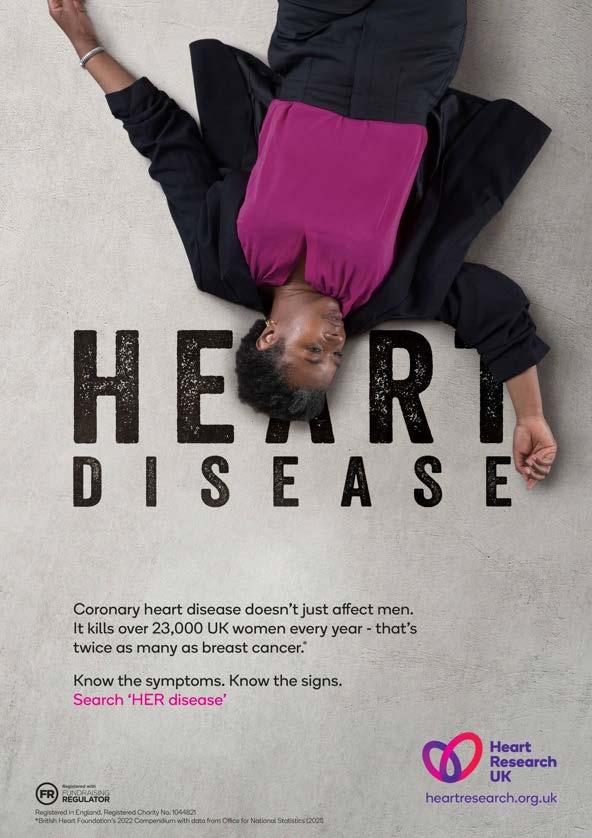

r. Jane Cooke Wright (1919–2013) was not just a physician—she was a visionary who reshaped the landscape of cancer treatment. At a time when opportunities for women, particularly African American women, in medicine were scarce, she defied the odds, breaking barriers and pioneering new approaches to chemotherapy. Her research not only revolutionized the way cancer is treated but also paved the way for personalized medicine, saving countless lives. With an unwavering commitment to patient care and scientific discovery, Dr. Wright’s work laid the foundation for modern oncology, making her a true trailblazer in the field.
Born in New York City in 1919, Jane Cooke Wright inherited a passion for medicine from her father, Dr. Louis Tompkins Wright, a trailblazing physician and one of the first African American graduates of Harvard Medical School. Her father’s work in cancer research at Harlem Hospital inspired her to follow in his footsteps. Jane excelled academically, graduating with honors from New York Medical College in 1945 before completing her internship at Bellevue Hospital and her residency at Harlem Hospital.
Her early exposure to medicine and research fueled her ambition to make a difference in cancer treatment. After completing her residency, she joined her father’s research team at Harlem Hospital, where she worked on developing more effective chemotherapy treatments. This early work laid the foundation for her later breakthroughs in oncology.
In the late 1940s and early 1950s, chemotherapy was still in its infancy, with limited options available for cancer patients. Dr. Wright and her father conducted groundbreaking research into anti-cancer chemicals, testing new drugs on leukemia and lymphoma patients. Their work led to significant breakthroughs, helping to establish chemotherapy as a viable cancer treatment. Following her father’s passing in 1952, Dr. Wright took over as head of the Cancer Research Foundation at Harlem Hospital, cementing her place as a leader in oncology at just 33 years old.
Dr. Wright’s pioneering approach to chemotherapy involved using human tissue cultures instead of laboratory mice to test drug efficacy. This novel method allowed for more accurate assessments of how potential treatments would affect human cancer cells. One of her most notable
contributions was identifying methotrexate as an effective drug for treating breast and skin cancers—a breakthrough that remains a cornerstone of chemotherapy today.
Her research also led to the development of combination chemotherapy, a technique that uses multiple drugs to target cancer cells more effectively. This approach dramatically improved patient survival rates and became a standard practice in oncology. Dr. Wright’s work provided the scientific backing needed to expand the use of chemotherapy for various cancers, including lung, colon, and ovarian cancers.
One of Dr. Wright’s most significant contributions to oncology was her early advocacy for personalized medicine. She recognized that cancer treatments needed to be tailored to individual patients rather than following a one-size-fits-all approach. By studying how different tumors responded to chemotherapy in human tissue cultures, she helped pave the way for targeted therapies that are now a standard part of cancer treatment.
She was also a pioneer in intra-arterial chemotherapy, a technique that delivers chemotherapy directly to tumors through the bloodstream. This method increased the effectiveness of treatment while minimizing damage to healthy cells, significantly improving patient outcomes. Her innovative work in drug testing and administration set new standards in oncology and remains a critical part of cancer treatment today.
Dr. Wright’s influence extended far beyond the laboratory. In 1967, she became a professor of surgery, head of the Cancer Chemotherapy Department, and associate dean at New York Medical College—making history as the highest-ranking African American woman in a nationally recognized medical institution at the
time. She continued to mentor and inspire future generations of doctors and researchers, paving the way for greater diversity in medicine.
She was a fierce advocate for increasing opportunities for women and minorities in medicine. Throughout her career, she mentored countless students, ensuring that the next generation of doctors and scientists had the support they needed to thrive. Her leadership helped break down barriers that had long excluded women and people of color from high-ranking positions in the medical field.
Beyond her contributions to cancer treatment, Dr. Wright was a strong advocate for international medical collaboration. She led delegations of oncologists to China, Eastern Europe, the Soviet Union, Ghana, and Kenya, sharing knowledge and advancing global cancer research efforts. Her leadership extended to the American Society of Clinical Oncology (ASCO), where she was the only woman among the organization’s seven founding members.
Dr. Wright recognized that cancer was a global issue that required international cooperation. She worked with researchers and doctors around the world to share knowledge and develop better treatments. Her efforts helped establish strong international partnerships that continue to drive progress in cancer research today.
Throughout her illustrious career, Dr. Wright earned numerous accolades for her groundbreaking work. In 1952, she received the Merit Award from Mademoiselle Magazine, and in 1981, Smith College honored her with the Otelia Cromwell Award. She was also recognized by medical institutions and organizations worldwide for her contributions to oncology and her commitment to advancing cancer research.
Her impact was not only in her research but also in her ability to inspire future generations. She spoke at medical conferences, wrote extensively on chemotherapy treatments, and served on numerous boards dedicated to cancer research and medical education. Her work influenced the direction of oncology research for decades to come.
Dr. Jane Cooke Wright’s work spanned over 40 years, during which she published extensive research on chemotherapy and helped shape modern oncology. Her relentless pursuit of scientific discovery transformed cancer treatment and established her as a true pioneer in the medical field. Today, her legacy lives on, inspiring the next generation of medical professionals to push the boundaries of cancer research and patient care.
Her contributions continue to influence cancer treatment, and her advocacy for diversity in medicine has left a lasting impact on the field. The path she paved for women and African Americans in science and medicine has led to greater representation and opportunities for future generations.
Dr. Wright’s work serves as a reminder that determination, innovation, and a commitment to helping others can change the world.
Dr. Wright’s contributions to oncology were nothing short of revolutionary. Her research and dedication have saved countless lives and continue to shape the future of cancer treatment. She stands as a testament to what is possible when brilliance and perseverance come together in the pursuit of a better future for all.




Media is a powerful tool. It shapes how we see the world, defines social norms, and influences public opinion. We learn about our societies, cultures, and the issues that matter most through the media. But who tells these stories, and who controls the narratives? Media remains one of the most important avenues for shaping perceptions and societal understanding. Yet, the people who dominate media spaces globally remain overwhelmingly male, particularly when it comes to the portrayal of women and girls from the Global South.
The absence of women’s voices in the media is not just an oversight. It is a systemic issue that perpetuates gender bias, exacerbates stereotypes, and leaves critical issues, especially those affecting women, underreported. This exclusion also stifles the full potential of journalism, reducing its ability to be truly representative and inclusive. Whether through film, news, or digital media, the lack of female perspectives in storytelling is glaring.
Gender Bias in Media: A Global Phenomenon
Globally, women remain grossly underrepresented in the media. According to UN Women, only 24% of people heard, read about, or seen in news reports are women. This underrepresentation is not just limited to the news cycle but spans across all forms of media—film, advertising, and even social media platforms. Even in regions where women make up a significant portion of the population, their voices and stories are either ignored or misrepresented.
The problem is especially acute in developing countries, including those in Africa. In many parts of the continent, women face additional barriers to participating in media, rooted in both cultural expectations and structural inequality. These barriers are not just about exclusion from the newsroom; they are about exclusion from opportunities that are vital for career advancement in media.
In Africa, gender bias in media is compounded by socio-economic challenges, where women often have fewer resources, less access to education, and limited professional networks compared to their male counterparts. These inequalities create a cycle of exclusion that affects everything from reporting to framing stories to leadership positions in media houses. In addition, cultural norms in some African countries discourage women from taking on visible public roles, which further reinforces the gender gap in media representation.
When women are excluded from media spaces, we lose more than just the opportunity to hear from half of the population. We miss out on nuanced perspectives, particularly on issues like gender-based violence, sexual and reproductive rights, health, and economic inequality. These are not abstract concepts—they directly affect women’s lives, yet they are often told from a male-dominated viewpoint that fails to address the complexities of these issues.
For instance, gender-based violence is a pervasive issue in many parts of the world, yet media coverage of it is often insufficient, sensationalized, or misrepresented. In Africa, the portrayal of women in media often perpetuates stereotypes of passivity or victimhood, which fails to acknowledge the resilience, agency, and voices of women who are leading change in their communities. The lack of diverse perspectives means that critical conversations about women’s rights, gender equality, and societal structures remain incomplete and, at times, inaccurate. This issue is particularly pronounced when it comes to reproductive health and rights. Women’s health concerns, particularly around sexual and reproductive health, often go unreported or are depicted in ways that ignore the real needs of women. The lack of women in the media space means that policies and stories about these issues are often shaped by those who do not face them directly, leading to gaps in coverage and, at times, harmful portrayals.
Beyond the content of media stories, the absence of women in media also has broader societal implications. Media plays a key role in shaping norms and behaviours. When women are not represented or are somewhat misrepresented, it sends a message that their voices are not critical, that their concerns do not matter, and that they have no place in the shaping of public opinion. This, in turn, reinforces a cycle of exclusion and disempowerment that continues to affect women’s participation in all sectors, not just in media.
The media’s exclusion of women comes at a steep cost—not only to women themselves but also to the broader society. When women’s voices are silenced or marginalized, the entire narrative becomes skewed, preventing an honest, inclusive dialogue about societal issues. Women have unique insights and experiences that can enrich how we approach storytelling, particularly regarding gender-based violence, health issues, and economic inequality.
Studies consistently show that diverse teams in media, business, or politics are more innovative, productive, and better equipped to solve complex problems. When women are allowed to participate in media creation, the resulting stories are more comprehensive and authentic and better able to reflect the true complexity of the world. The media industry, like any other, thrives when it embraces diverse perspectives and allows for fuller, more inclusive representation.
In order to address the systemic exclusion of women from the media, several key areas must be tackled:
Women need access to the skills and tools required to participate fully in the media. This includes theory and hands-on training in journalism, photography, video production, and digital media. However, it’s not just about academic training—it’s about ensuring women are given the resources to succeed. Access to cameras, computers, and other media tools is critical in breaking down barriers to entry.
One of the key barriers women face in entering the media industry is the lack of professional networks and mentorship. Women need access to mentorship from those who have already navigated the industry’s challenges and opportunities to connect with other women in the field. This not only helps women gain the confidence they need but also allows them to learn from the experiences of others. Furthermore, women who have already broken the supposed glass ceiling must also be willing to lift up other women.
The media industry must also work to create safer, more inclusive environments where women can thrive. This means addressing workplace harassment, challenging gender biases, and ensuring that women are represented at all levels of decision-making, including leadership positions.
A critical aspect of changing the narrative in media is ensuring that ethical storytelling becomes the standard. This involves moving away from outdated, colonial depictions of African culture and instead creating narratives that reflect the true diversity of African experiences. Ethical storytelling also means giving women the space to tell their own stories rather than having their lives portrayed through the lens of
outsiders. When it comes to women, it means having other women tell their stories from a perspective of the lived experience.
The fight for gender equality in the media is not a distant ideal but an urgent necessity. If we continue to exclude women from media spaces, we risk perpetuating a one-sided view of the world that overlooks the complexities of gender-based violence, reproductive health, and women’s rights. When women are absent from the media, entire sectors of society are ignored, and the potential for social and economic progress is limited.
Investing in women’s voices is not just about improving media; it is about improving society. When women are given the tools and the platform to tell their stories, the narratives that emerge are richer, more nuanced, and more inclusive. As long as women’s voices remain marginalized in the media, we will continue to see a distorted reflection of the world. The time to act is now.
Amina Mohamed is the Founder and Executive Director of Cameras For Girls, a Canadian charity working to advance gender equality in media by equipping young women in Africa with photography, ethical storytelling, and business skills. A former refugee from Uganda and a veteran of Canada’s film and television industry, Amina has trained over 100 women through a four-phase curriculum that helps them break into male-dominated media spaces. With more than 80% of graduates securing paid work, her work is transforming not just careers, but the media narrative itself.





AOA Dx is redefining the landscape of cancer detection with its groundbreaking advancements in liquid biopsy and multi-omics technology. Established in 2020, the Denver-based company is on a mission to transform women’s health by enabling early and accurate cancer detection, particularly for ovarian cancer—one of the most lethal gynecologic malignancies due to late-stage diagnoses.
cutting-edge liquid biopsy test designed for early ovarian cancer detection. At the core of this breakthrough is the company’s proprietary GlycoLocate™ platform, a multi-omics technology that utilizes tumor marker gangliosides, lipids, and proteins to detect cancer at its earliest stages.
Backed by $17 million in Series A funding and a growing team of dedicated experts, AOA Dx is setting a new gold standard in oncology diagnostics, ensuring that life-saving innovations reach the patients who need them most.
AOA Dx specializes in biotechnology, diagnostics, and liquid biopsy innovation, focusing on women’s health. The company’s GlycoLocate™ platform is a game-changer in the field of cancer diagnostics, utilizing tumor marker gangliosides—specific lipids associated with cancer cells—to improve the accuracy and reliability of early detection.
▪ First-of-its-kind liquid biopsy for ovarian cancer –AKRIVIS GD™ leverages tumor marker gangliosides, providing a highly specific and sensitive test for early-stage ovarian cancer detection.
▪ Multi-Omics Approach – Integrating lipidomics, proteomics, and machine learning, AOA Dx is pushing the boundaries of cancer diagnostics.
▪ Bridging the Gap Between Research and Commercialization – With over 90% of medical discoveries never reaching clinical application, AOA Dx is committed to bringing research-driven innovations to patients.
▪ Regulatory & Clinical Expertise – The company is actively engaging with the FDA and global regulatory bodies to bring its technology to market.
With a powerful vision to create a world where more women live longer and healthier lives, AOA Dx is spearheading the development of AKRIVIS GD™, a
In a space where early detection can mean the difference between life and death, AOA Dx is not just
innovating—it is revolutionizing how cancer is diagnosed and managed.
Major Achievements: A Trailblazing Journey in Cancer Research Since its founding, AOA Dx has rapidly evolved into a leader in ovarian cancer diagnostics. The company’s strategic partnerships, clinical breakthroughs, and scientific contributions have positioned it at the forefront of women’s health.
Groundbreaking Research & Scientific Validation:
▪ In 2021, AOA Dx conducted a proof-of-concept study analyzing 500 retrospective ovarian cancer samples, laying the foundation for AKRIVIS GD ™.
▪ Peer-reviewed publications in Frontiers Oncology (2023) highlighted the diagnostic power of tumor marker gangliosides in ovarian cancer.
▪ Raised $2.5M Pre-Seed (2021) and $5M Seed Round (2022) from investors like Y Combinator, Avestria Ventures, and AlleyCorp to accelerate research and commercialization.
▪ Secured a $17.2M Series A round (2023), led by Good Growth Capital and Labcorp Venture Fund, enabling lab expansion and clinical trial advancements.
▪ CEO Oriana Papin-Zoghbi recognized as one of Inc.’s Top 100 Female Founders (2022).
▪ Selected for leading accelerator programs such as Y Combinator,
▪ MassChallenge, and Springboard Enterprises.
▪ Invited as a key member of BLOODPAC, a prestigious liquid biopsy consortium focused on standardizing cancer diagnostics.
▪ Kicked off the OVERT Study (2022) to validate

AKRIVIS GD™ in a real-world patient population.
▪ Expanded the AOA Dx team from 3 co-founders to 12 full-time employees, strengthening clinical, regulatory, and R&D expertise.
▪ Opened state-of-the-art lab facilities in Denver, CO (2024) to accelerate in-house research and commercialization efforts.
AOA Dx’s ability to scale rapidly, secure funding, and publish high-impact research underscores its potential to become a dominant force in oncology diagnostics.
AOA Dx is not just another biotech company—it is a mission-driven innovator determined to redefine cancer detection and give women a fighting chance against ovarian cancer. By harnessing the power of multi-omics, AI, and liquid biopsy, AOA Dx is paving the way for a future where early cancer detection is not just possible but widely accessible.
With its visionary leadership, cutting-edge technology, and strategic partnerships, AOA Dx is well on its way to making early ovarian cancer detection a clinical reality. The company’s relentless pursuit of innovation ensures that more women will have access to life-saving diagnostics—offering hope, time, and a future free from the devastating impact of late-stage cancer diagnoses.
For more information, visit www.aoadx.com.



Wtreatment, he knew it wouldn’t be easy. But driven by an unwavering determination and over 20 years of cancer research experience, he envisioned a world where even the most aggressive cancers could be tamed. In 2018, that vision took shape as Tradewind BioScience — a small but mighty biotechnology company dedicated to developing transformative cancer therapies.
Nestled in the vibrant innovation hub of Mountain View, California, Tradewind’s mission is clear: develop therapeutics that go beyond merely
controlling cancer to truly defeating it. This bold pursuit has captured the attention of scientific leaders, investors, and — most importantly — patients who have run out of options.
From the start, Tradewind’s ambition wasn’t just to make another cancer drug — it was to revolutionize cancer treatment altogether. The company set its sights on tackling the most difficult-to-treat cancers, the kind that often leave patients and families feeling helpless. Dr. Allen and his team wanted to change that narrative.
Tradewind’s core innovation lies in its lead program, a high-affinity, multifaceted attack antibody that functions through multiple modes of action. Unlike conventional therapies that target a single pathway, Tradewind’s approach involves a dual-action mechanism: attacking cancer cells directly while also mobilizing the immune system to fight back. The goal? Not just to control the disease but to eradicate it.
Backed by in vivo studies, this novel therapy has shown impressive potential to halt cancer progression, including preventing metastasis — the deadliest aspect of the disease. It’s not just about targeting the primary tumor but also stopping the spread to other organs. This multifaceted strategy has the potential to redefine how aggressive cancers are treated, starting with ovarian cancer — a notoriously stubborn and life-threatening diagnosis.
Tradewind BioScience is far from a conventional biotech startup. Fueled by passion and perseverance, the company took a strategic leap by joining Y Combinator, one of the most prestigious startup accelerators in the world. Dr. Allen knew that scientific brilliance needed a platform — and the accelerator program provided precisely that. With the support of Y Combinator and the National Cancer Institute (NCI), Tradewind secured $120,000 in seed funding, giving them the boost to advance their research and development.
Tradewind is also deeply committed to precision medicine, with a focus on biomarker identification. Rather than a one-size-fits-all approach, their therapies are designed to benefit the patients most likely to respond, maximizing outcomes while minimizing unnecessary treatments. This commitment to personalized healthcare is as much a scientific pursuit as it is a moral one.
Behind every groundbreaking innovation is a visionary leader, and Dr. Thaddeus Allen is that leader for Tradewind. A scientist at heart, Dr. Allen’s journey to the forefront of biotechnology is rooted in rigorous academic training and hands-on experience. From earning his Ph.D. in Cellular and Molecular Biology at the University of Toronto to working alongside Nobel Laureate J. Michael Bishop at UCSF, his career has been defined by an insatiable curiosity and a passion for problem-solving.
As CEO, Dr. Allen has worn many hats — from leading drug discovery teams to managing intellectual property and steering strategic partnerships. His ability to bridge science with business acumen has been instrumental in transforming Tradewind from an ambitious idea into a biotech disruptor. By integrating cutting-edge research with real-world application, he has paved the way for therapies that could change how we fight cancer.
Dr. Allen’s leadership philosophy is rooted in collaboration and innovation. He believes that the best science happens when great minds work together, challenging norms and pushing boundaries. His ability to communicate complex ideas with clarity has made him an influential voice at scientific conferences, sharing Tradewind’s vision with global leaders and stakeholders.
Tradewind’s journey hasn’t been without challenges. Developing therapeutics for the most aggressive cancers means navigating uncharted waters, where failure can feel as inevitable as it is devastating. Yet, it’s precisely this uphill battle that fuels the team’s
drive. Whether it’s unraveling the complexities of immune response or dissecting the intricacies of protein inhibition, Tradewind thrives on finding solutions where others see obstacles.
The support from Y Combinator was not just financial but strategic. The mentorship and guidance enabled the company to scale its operations while maintaining scientific integrity. Additionally, partnerships with the National Cancer Institute (NCI) fortified their research foundation, giving them access to invaluable insights and cutting-edge data.
But at the heart of Tradewind’s success is a culture of resilience and innovation. Dr. Allen and his team don’t just want to make an impact — they want to change the paradigm of cancer treatment. Each milestone, each published study, and each promising result brings them closer to that reality.
The future for Tradewind BioScience is brimming with potential. As they continue to refine their lead program and expand therapeutic indications, the company remains laser-focused on the patients who need their innovations the most. With ovarian cancer as the initial target,Tradewind is already exploring the potential of their therapies in treating other aggressive malignancies. Tradewind’s journey is one of vision, science, and unyielding commitment. From humble beginnings to pioneering breakthroughs, they have never lost sight of their mission: to give patients and families facing the most aggressive cancers a fighting chance — and, ultimately, hope.
As Tradewind BioScience continues to push the boundaries of oncology, one thing is clear: they are not just another biotech startup. They are dreamers and doers, scientists and strategists — a small but determined force leading the charge in the revolution against cancer.
For more insights and the latest updates on their groundbreaking work, visit www.tradewindbio.com
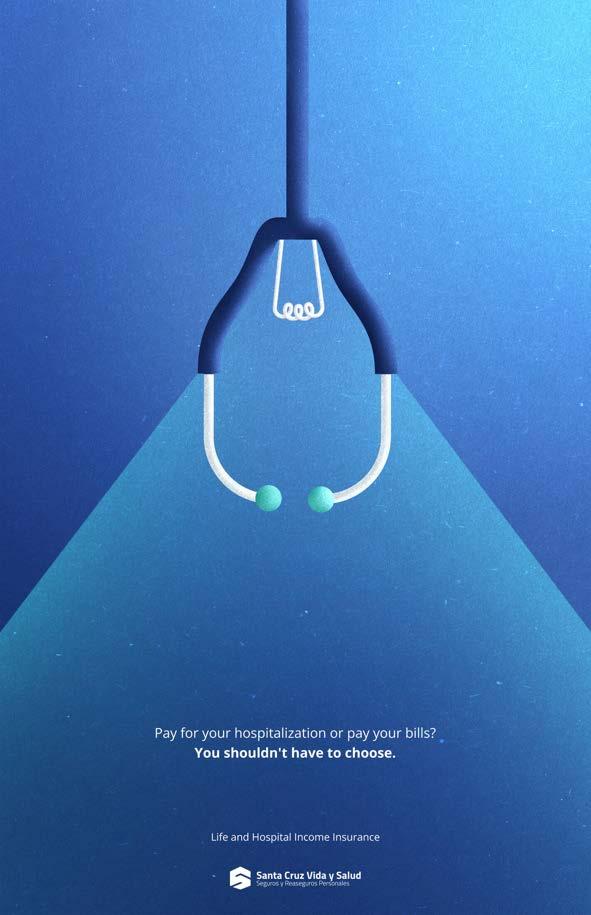

Nadiya Albishchenko Founder & CEO INAS EXIM LLC
When we think of cleaning, we often picture strong chemical disinfectants, foamy detergents, and harsh sanitizers. While these products effectively remove dirt and bacteria, they often come with downsides—toxic residues, environmental pollution, and health risks. But what if cleaning could be just as powerful, yet safer and more sustainable?
Enzyme-based cleaning is emerging as an eco-friendly, science-backed alternative that harnesses the natural power of biological catalysts to break down stains, grease, and contaminants. Here’s how it’s transforming hygiene in ways you might not have considered.
Most traditional cleaning products rely on synthetic chemicals to dissolve dirt and bacteria. However, these chemicals don’t always break down completely, leaving behind residues that can affect indoor air quality and even trigger allergies.
Enzyme-based cleaners work differently. Rather than masking odors or simply washing away dirt, enzymes break down organic matter at the molecular level, making it easier to remove.
▪ Protease enzymes target protein-based stains (like food or sweat).
▪ Lipase enzymes dissolve fats and oils, ideal for kitchens and industrial spaces.
▪ Amylase enzymes break down starches, useful for laundry and surfaces. This precision makes enzyme-based products highly effective, yet safer for both people and the environment.
Many conventional cleaners contain ammonia, chlorine, or phosphates, which can contribute to respiratory issues, skin irritation, and allergic reactions. This is especially concerning in hospitals, schools, and hotels, where frequent cleaning is necessary.
Enzyme-based solutions offer a non-toxic, biodegradable alternative that is just as effective without the harmful side effects. By breaking down contaminants naturally, they help maintain a healthier indoor environment, reducing exposure to harsh chemicals.
Enzymes aren’t just used in surface cleaning—they’re also making a difference in water treatment and pollution control. Traditional water purification methods often rely on chlorine and synthetic disinfectants, which can introduce byproducts that affect water quality, taste, and odor
Enzyme-based solutions provide a biological approach to water purification by helping break down organic pollutants. This process reduces chemical dependency while supporting cleaner water systems, making it a promising solution for wastewater treatment, industrial facilities, and even home water purification.
One of the biggest concerns with traditional cleaning products is their impact on the environment. Many chemical-based formulas contribute to water pollution, as their residues enter drainage systems and eventually reach rivers and oceans.
Enzyme-based cleaners, on the other hand, are designed to break down naturally, reducing their ecological footprint. As industries and households become more aware of sustainability, shifting to bio-based solutions is not just beneficial—it’s essential for a cleaner, healthier planet.
From households to businesses and industrial facilities, more people are recognizing the benefits of enzyme-based cleaning. Whether it’s used for home sanitation, commercial kitchens, healthcare settings, or large-scale water treatment, the science behind enzymes is proving that cleaning can be both powerful and environmentally responsible

A growing number of brands, such as ARABSABIO®, are developing enzyme-based cleaning solutions to replace traditional chemical detergents. By using naturally derived, biodegradable ingredients, these solutions offer an effective, non-toxic, and eco-friendly approach to hygiene. As awareness grows, enzyme-based cleaning is set to become the new standard—one that works in harmony with nature, rather than against it.

Nadiya Albishchenko is a global leader in international trade, blending expertise in business and genetics to drive innovation. As the founder of INAS EXIM LLC (www.inasexim.com) and co-author of Synergy: A Synopsis of an Elite Business Partnership (www.thecreativeauthors.com) with Vinay Gandhi, founder of Golden Star International LLC (www.goldenstarinternational.com), she shares insights on building successful business relationships and navigating global markets. Through her work in product development, sustainability, and women’s empowerment, she continues to make a lasting global impact.




ntroduction
ICancer remains one of the leading causes of mortality worldwide, claiming approximately 10 million lives annually. Despite remarkable advancements, the global cancer burden continues to grow, with new cases expected to increase by over 75% between 2022 and 2050. The most prevalent cancers include breast, lung, and colorectal cancer. While high-income countries have made significant strides in both diagnosis and treatment, low- and middle-income countries (LMICs) continue to face higher death rates due to limited healthcare access.
However, 2025 marks a promising year in oncology, with groundbreaking innovations and trends shaping the future of cancer diagnosis and treatment. Advances in precision medicine, immunotherapy, artificial intelligence (AI), and early detection techniques are among the critical areas gaining traction. Leading oncologists and experts forecast new breakthroughs that could revolutionize cancer care, saving countless lives and improving the quality of patient care.
One of the most exciting trends is the rise of personalized cancer vaccines designed to boost the immune system’s ability to target cancer cells, reducing the risk of recurrence. Additionally, new rapid diagnostic tests, such as those that identify 18 early-stage cancers using blood protein analysis, offer hope for early intervention. Emerging treatments like CAR-T-cell therapy, synthetic biopsies, and precision oncology also stand out as promising approaches in the ongoing fight against cancer.
Furthermore, addressing disparities and social determinants of health has become increasingly vital in cancer care. Climate change and socioeconomic factors continue to widen the gap in cancer outcomes, particularly among underrepresented and disadvantaged populations. Therefore, researchers are working on innovative ways to mitigate disparities and deliver equitable care to all patients.
Cancer diagnosis and treatment have evolved dramatically over the past few years, with 2025 ushering in several game-changing advancements. Below are some of the most impactful trends and innovations shaping the future of oncology:
Precision medicine continues to redefine how oncologists approach cancer treatment. The focus is on developing mutant-specific molecules, targeting cancer at a genetic and molecular level. One of the most notable advancements in 2025 is the emergence of second-generation inhibitors for the KRASG12C mutation, as well as progress on pan-KRAS and pan-RAS inhibitors. Additionally, therapeutic cancer vaccines and T-cell receptor therapies are gaining traction, offering new ways to combat tumors that were previously considered undruggable.
Immunotherapy remains at the forefront of cancer treatment, with antibody-drug conjugates (ADCs) showing promising results. These therapies target tumor proteins with antibodies linked to toxic payloads, minimizing damage to healthy cells. Innovations like cancer vaccines are proving effective in high-mutation cancers, such as melanoma, and low-mutation cancers, like pancreatic cancer. A significant breakthrough is the development of off-the-shelf CAR T-cell therapies, making these powerful treatments more accessible.
Artificial intelligence is rapidly transforming oncology, from predicting cancer risk to optimizing treatment strategies. AI models developed at institutions like MIT can predict lung cancer risk years in advance, while multimodal data integration is improving diagnostic accuracy. Additionally, AI-based radiological and pathological analysis helps identify biomarkers that are critical for treatment decisions.
Personalized cancer vaccines are on the rise, designed to stimulate the immune system to recognize and attack specific tumor antigens. For instance, the Cancer Vaccine Launch Pad in the UK is paving the way for mRNA-based vaccine trials, akin to COVID-19 vaccine technology. These vaccines aim to reduce recurrence rates and enhance long-term survival with minimal side effects.
Innovative biopsy methods are significantly reducing the need for invasive tissue sampling. Liquid biopsies, which analyze blood samples for tumor DNA, are becoming a
preferred method for early detection. Additionally, synthetic biopsies force tumor cells to reveal themselves, even during the earliest stages of disease progression.
2.6. Addressing Disparities and Climate Change
Social determinants of health are now being recognized as key factors influencing cancer outcomes. Disparities related to race, ethnicity, socioeconomic status, and even climate change are being studied more rigorously. Multidisciplinary research is focusing on reducing these inequities through targeted interventions and policies.
3.1 Precision Medicine (Dr. Lillian L. Siu)
Dr. Siu emphasizes the transition from first-generation KRAS inhibitors to more advanced mutant-specific molecules. She highlights the significance of artificial intelligence and spatial transcriptomics in understanding the tumor microenvironment, predicting treatment response, and identifying new biomarkers.
3.2 Immunotherapy (Dr. Vinod P. Balachandran)
Dr. Balachandran is optimistic about the expanding applications of antibody-drug conjugates (ADCs) and cancer vaccines. He is particularly interested in exploring whether personalized or off-the-shelf vaccines will prove more effective in combating various cancer types.
3.3 Hematologic Malignancies (Dr. John E. Dick)
Dr. Dick points out that overcoming drug-resistant cancer stem cells remains a significant challenge. He
foresees progress in CAR T-cell therapy and Boolean logic targeting, which helps distinguish between malignant and normal cells, minimizing toxicity.
3.4 Artificial Intelligence (Dr. Regina Barzilay)
Dr. Barzilay sees AI as a transformative force in cancer prediction and treatment. AI models are already demonstrating superior accuracy in predicting cancer development compared to human experts. However, she emphasizes the need for healthcare infrastructure to catch up with technological advancements.
3.5 Cancer Disparities (Dr. Scarlett Lin Gomez)
Dr. Gomez warns that climate change and socioeconomic inequities are creating new cancer health disparities. She advocates for multidisciplinary research and intersectional analysis to address complex risk factors affecting marginalized populations.
4. Leading Companies in Cancer Diagnosis and Treatment
4.1 World’s 7 Best Pharmaceutical Companies to Watch in 2025
The pharmaceutical industry is continuously evolving, driven by innovation and the relentless pursuit of better healthcare solutions. As we look toward 2025, these seven companies stand out for their groundbreaking contributions to cancer treatment and diagnosis.
1. Johnson & Johnson: Innovating cancer therapies.
Johnson & Johnson Innovative Medicine is a global leader in pharmaceutical manufacturing, dedicated to revolutionizing cancer treatment through cutting-edge innovation. Driven by the experiences of patients worldwide, our science-based solutions continue to change and save lives. We combine rigorous research with compassion, tackling the most complex diseases of our time while developing groundbreaking therapies. From pioneering lab discoveries to real-world applications, we remain committed to finding cures and empowering patients at every step. Our mission is to shape the future of medicine with unwavering dedication and purpose.
Website: Johnson & Johnson Innovative Medicine
2. Pfizer: Oncology portfolio with targeted treatments.

Pfizer Inc., a global leader in pharmaceutical manufacturing, has been pioneering scientific innovation for over 175 years. Headquartered in New York, the company employs over 10,000 professionals worldwide. With a robust oncology portfolio, Pfizer focuses on targeted treatments to improve health and well-being at every stage of life. By leveraging science and global resources, Pfizer ensures access to safe, effective, and affordable medicines. As a trusted healthcare partner, Pfizer continues to push the boundaries of medical advancements to protect and enhance lives. Discover more at PfizerForAll.com.
3. AstraZeneca: Leading research in targeted therapies and immunotherapies.

AstraZeneca is a global, science-led biopharmaceutical company headquartered in Cambridge, UK. With over 10,001 employees worldwide, AstraZeneca is committed to transforming healthcare by leveraging scientific innovation to benefit people, society, and the planet. Specializing in pharmaceutical and biopharmaceutical research and development, the company drives groundbreaking advancements in cancer treatment and diagnosis. AstraZeneca’s unwavering dedication to innovation and global business operations positions it as a leader in the pharmaceutical manufacturing industry. Through strategic partnerships and cutting-edge research, AstraZeneca continues to shape the future of healthcare.
For more information, visit www.astrazeneca.com.
4. Novartis: Pioneering new cancer drugs and solutions.

fight against serious diseases, Novartis reaches over 250 million people worldwide. Headquartered in Basel, Switzerland, the company specializes in cutting-edge treatments, including cardiovascular, immunology, neuroscience, solid tumors, hematology, chemistry, xRNA, radioligand, and gene and cell therapy. As a pharmaceutical manufacturing giant with over 10,001 employees, Novartis continuously advances healthcare through innovation and collaboration.
Discover more about their transformative impact on global health at www.novartis.com.
5. AbbVie: Focused on biologic cancer treatments.

mission and innovation at www.abbvie.com.
6. Eli Lilly: Developing novel cancer therapies.

Novartis is a global leader in innovative medicines, committed to reimagining medicine and improving lives. With a mission to empower patients, healthcare professionals, and societies in the
AbbVie is a leading global biopharmaceutical company headquartered in North Chicago, Illinois, dedicated to transforming lives through innovative medicines and solutions. With over 10,001 employees worldwide, AbbVie focuses on addressing complex health challenges, specializing in oncology, immunology, neuroscience, eye care, aesthetics, and more. Driven by cutting-edge research and development, the company leverages biotherapeutics to enhance patient outcomes and meet unmet medical needs. As a pioneer in biotechnology and pharmaceutical manufacturing, AbbVie is committed to advancing healthcare and delivering impactful solutions.
Discover more about AbbVie’s
Eli Lilly and Company, a global leader in pharmaceutical manufacturing, has been dedicated to improving lives for nearly 150 years. Founded by Colonel Eli Lilly, our mission is rooted in scientific innovation and the relentless pursuit of medical breakthroughs. Leveraging biotechnology, chemistry, and genetic medicine, we address some of the world’s most pressing health challenges. Headquartered in Indianapolis, Indiana, and employing over 10,001 dedicated professionals, we specialize in pharmaceutical development, biotech, and biopharmaceuticals. Our commitment to excellence continues to shape the future of healthcare. For more information, visit our website at www.lilly.com.
7. Merck Life Science: Innovating in immuno-oncology.

Merck Life Science is a global leader in biotechnology research, dedicated to advancing life and health through innovative science. With a presence in over 66 countries and a team of around 60,000 employees, we empower researchers
with cutting-edge tools, services, and expertise to drive scientific breakthroughs. Our extensive portfolio supports pharmaceutical development, manufacturing, CDMO, and contract testing across both traditional and novel modalities.
Guided by our vision for a sustainable future, we strive to deliver transformative solutions that positively impact lives worldwide. Discover how we are shaping the future of science at Sigma-Aldrich. Website: www.sigmaaldrich.com
The diagnostics industry is rapidly evolving, driven by groundbreaking technologies and innovative solutions that redefine healthcare. As we look ahead to 2025, these seven companies are leading the way in precision diagnostics, oncology research, and cutting-edge healthcare solutions. Here’s a closer look at the world’s best diagnostics companies to watch in 2025.
1. Illumina: Genomics and cancer research tools.

Founded in 1998 and headquartered in San Diego, CA, Illumina is a global leader in biotechnology research. Our mission is to revolutionize genetic analysis through innovative technologies, enabling groundbreaking studies that were once unimaginable. We specialize in cutting-edge, array-based solutions for DNA, RNA, and protein analysis, supporting disease research, drug
development, and clinical molecular testing.
At Illumina, we prioritize flexibility, scalability, and exceptional customer support, fostering collaborative interactions and rapid solution delivery. With a team of over 9,000 dedicated professionals, we are committed to advancing personalized medicine and driving scientific breakthroughs that transform healthcare.
Visit us at www.illumina.com to learn more.
2. Thermo Fisher Scientific: Advanced cancer diagnostic solutions.

Thermo Fisher Scientific Inc. is the global leader in serving science, generating approximately $40 billion in annual revenue. Our mission is to empower customers to create a healthier, cleaner, and safer world. We support life sciences research, diagnostics, pharmaceutical development, and laboratory efficiency through innovative solutions and unmatched services.
With a dedicated global team, we offer cutting-edge technologies and comprehensive pharmaceutical services through renowned brands like Thermo Scientific, Applied Biosystems, Invitrogen, Fisher Scientific, Unity Lab Services, Patheon, and PPD. Headquartered in Waltham, MA, we specialize in analytical instruments, laboratory solutions, specialty diagnostics, and pharma services, employing over
10,000 professionals worldwide. Visit us at www.thermofisher.com.
3. Guardant Health: Liquid biopsy technology.

Guardant Health, founded in 2012 and headquartered in Palo Alto, California, is a pioneering precision medicine company committed to transforming cancer care. Utilizing advanced blood and tissue tests, real-world data, and AI analytics, Guardant Health delivers critical insights to combat disease. The company has introduced groundbreaking tests, including Guardant360®, Guardant360® CDx, Guardant360 TissueNext®, Guardant360 Response™, GuardantINFINITY™, and Guardant Reveal®, addressing both advanced and early-stage cancers. The FDA-approved Shield™ test further enhances cancer screening efforts. With a team of 1,001-5,000 employees, Guardant Health remains at the forefront of biotechnology research, dedicated to extending cancer-free lives. Visit us at www.guardanthealth.com for more information.
4. Exact Sciences: Early cancer detection.

Company Profile: Exact Sciences Exact Sciences is a leading biotechnology research company dedicated to eradicating cancer through innovative solutions.
Headquartered in Madison, Wisconsin, we specialize in precision oncology, genomic testing, cancer screening, genetic testing, and cutting-edge research and development. Our mission is to transform cancer care by preventing it, detecting it earlier, and guiding personalized treatment.
With a dynamic team of over 5,000 professionals from diverse backgrounds, we are committed to pioneering advancements that save lives. Join us on our journey to fight cancer together. Discover career opportunities and learn more about our work at www.exactsciences.com.
5. Natera: Precision diagnostics for oncology.

Natera™ is a global leader in cell-free DNA (cfDNA) testing, revolutionizing oncology, women’s health, and organ health diagnostics. Established in 2004 and headquartered in Austin, Texas, Natera’s mission is to integrate personalized genetic testing into routine care, enabling earlier and more targeted interventions to improve patient outcomes.
Our advanced cfDNA technology platform supports a wide range of noninvasive tests, offering unparalleled accuracy and clinical utility. Validated by over 100 peer-reviewed publications, our tests set the industry standard in prenatal screening, oncology diagnostics, transplant rejection monitoring, and genetic counseling. With ISO 13485-certified and CAP-accredited
laboratories, Natera is committed to innovation and patient-centric solutions. Join our mission to change disease management worldwide at Natera Careers.
6. Bio-Rad Laboratories: Molecular diagnostic products.

Founded in 1952, Bio-Rad Laboratories is a global leader in biotechnology research and clinical diagnostics. With a dedicated team of over 8,000 employees and a robust global network, we empower life science researchers and medical diagnostic labs with innovative products that enhance the discovery process and deliver accurate, rapid results. Our extensive product portfolio includes laboratory instruments, apparatus, and consumables designed to separate, purify, identify, analyze, and amplify biological materials. Headquartered in Hercules, CA, Bio-Rad remains committed to advancing science and saving lives through cutting-edge solutions and long-lasting customer relationships. Visit us: www.bio-rad.com
7. Siemens Healthineers: Imaging and diagnostic solutions.

Siemens Healthineers is a global leader in medical technology, leveraging over 125 years of experience to pioneer sustainable healthcare breakthroughs. Our
extensive portfolio ranges from in vitro and in vivo diagnostics to advanced image-guided therapy and cancer care, enabling precise clinical decision-making and optimized treatment pathways. With core strengths in patient twinning, precision therapy, and cutting-edge digital solutions powered by AI, we address the most significant healthcare challenges worldwide.
Our team of over 71,000 dedicated professionals spans 70+ countries, pushing the boundaries of innovation to enhance patient care and expand healthcare access globally.
Website: Siemens Healthineers
Conclusion
The fight against cancer remains an ongoing challenge, but 2025 brings renewed hope with transformative innovations in diagnosis and treatment. From precision oncology and AI-driven care to groundbreaking immunotherapies and non-invasive diagnostics, the future of cancer treatment is rapidly evolving. Addressing disparities in healthcare access and leveraging technological advancements will be key to achieving better outcomes for all patients. Continued collaboration between researchers, healthcare providers, and policymakers will be essential in ensuring equitable and effective cancer care for future generations.






When it comes to fighting cancer, hope often hinges on innovation and collaboration. For AVEO Oncology, an LG Chem company, that means never settling for the status quo. Since its inception in 2001, AVEO has made it its mission to develop groundbreaking cancer therapies that not only extend life but also preserve its quality. Headquartered in Boston, Massachusetts, the company has grown from a small biopharma startup to a global force in oncology, driven by a simple yet powerful vision: to make life better for people with cancer.
AVEO’s partnership with LG Chem Life Sciences is a game changer in the oncology space. This alliance is
But AVEO isn’t stopping at just one success. The company is committed to ongoing research and development, working on immuno-oncology combinations that hold the potential to further enhance patient outcomes. One such promising combination is tivozanib with nivolumab (NIVO), currently under study to determine its effectiveness in patients who have previously received PD-1/PD-L1 therapy.
AVEO Oncology’s journey is not just about innovation but also about tangible achievements that make a real difference in patients’ lives. In January 2023, AVEO became a wholly owned subsidiary of LG Chem Life Sciences USA, Inc., marking a pivotal moment in the company’s evolution. This acquisition did more than

just expand AVEO’s resources; it amplified its mission to bring life-changing therapies to the global stage.
One of the most recent milestones in AVEO’s journey was their participation at the 2025 ASCO GU Meeting. Here, AVEO presented data from three Phase 3 studies that showcased the clinical benefit of tivozanib. The studies demonstrated that greater exposure to tivozanib significantly correlated with improved progression-free survival (PFS) and a reduction in tumor size (TS). These findings were not just promising—they were groundbreaking, offering new hope to patients battling advanced RCC.
In addition to presenting efficacy data, AVEO also unveiled insights into patient-reported outcomes (PROs) from the TiNivo-2 study. Although the study did not meet its primary endpoint, it shed light on clinically meaningful outcomes, particularly when using tivozanib as a second-line therapy. The results emphasized that patients who received tivozanib after immune checkpoint inhibitor (ICI) therapy reported better quality-of-life outcomes compared to those receiving it as a third-line treatment.
Behind every successful company is a visionary leader, and for AVEO, that leader is Michael P. Bailey. As the President and CEO, Bailey brings more than 30 years of experience in the pharmaceutical industry to the table. His journey with AVEO began in 2010, and since then, he has been at the helm of significant milestones, from securing FDA approval for FOTIVDA to guiding the company through its acquisition by LG Chem.
Before AVEO, Bailey made his mark at Synta Pharmaceuticals, ImClone Systems, and Genentech, Inc., gaining invaluable expertise in oncology drug development and commercialization. His strategic mindset and dedication to advancing cancer care have been pivotal in transforming AVEO from a promising biopharma company to a leader in oncology innovation.
The spirit of innovation at AVEO is not just limited to drug development—it permeates the entire organization. The leadership team, composed of seasoned pharmaceutical professionals, works hand-in-hand with a prestigious Scientific Advisory Committee. This panel of oncology experts provides critical insights, guiding AVEO’s clinical strategies and ensuring that every step forward is rooted in scientific excellence.
AVEO’s culture also embraces collaboration beyond the company’s walls. As part of the LG Chem family, AVEO leverages the global presence and vast resources of its parent company to amplify its impact. This approach allows AVEO to pursue strategic partnerships with biotech and pharmaceutical companies that share its commitment to oncology innovation.
As AVEO Oncology looks ahead, the goal is clear: to become a global leader in oncology by continuing to build on a strong foundation of innovative therapies. The company’s relentless dedication to addressing unmet patient needs is unwavering, as it strives to develop treatments that not only prolong life but also enhance its quality.
With a robust pipeline and a spirit of continuous innovation, AVEO is positioned to make a lasting impact on the field of cancer care. By prioritizing patient well-being and fostering a culture of scientific curiosity and collaboration, AVEO Oncology is set to redefine how cancer is treated—not just as a disease to be managed but as a challenge to be overcome.
As the fight against cancer continues, AVEO stands resilient and focused—committed to making a difference, one breakthrough at a time.



Aron Founder & CEO
Tn recent days, there has been a lot of speculation and debate around Diversity, Equity, and Inclusion (DEI). Some organizations are rebranding their DEI initiatives, laying off personnel from DEI teams, changing their roles or even questioning the relevance of DEI altogether. But is DEI really in danger? Or is it more critical now than ever before? Let’s break it down and separate fact from fiction.
At their core, organizations exist to make profits. They sell goods or services to consumers, whether directly, or through distributors, or via social media platforms. But here’s the undeniable truth: consumers are diverse. They come from different genders, generations, races, economic backgrounds, abilities, and social contexts. If organizations want to succeed and remain sustainable, they must understand and reflect the diversity of their consumers. This isn’t just a moral obligation—it’s a business imperative.
Think about it: Can a company truly understand the needs of a diverse customer base if its workforce is homogeneous? The answer is a resounding no. Diversity isn’t just a “nice-to-have”; it’s a “must-have” for any organization that wants to thrive in today’s globalized world.
DEI has evolved significantly over the years. Initially, it was seen as a compliance issue—something organizations had to do to avoid legal repercussions. However, as the business landscape has become more complex and interconnected, DEI has transformed into a cultural imperative. It’s no longer just about meeting quotas or avoiding lawsuits; it’s about fostering an environment where everyone feels valued, respected, and empowered to contribute their best.
Understanding this shift from compliance to culture is crucial. Organizations that view DEI as a checkbox exercise are missing the point. DEI is about creating a workplace where every unique individual is empowered and enabled to contribute to their fullest.
It’s about building a culture that attracts the best talent, and nurtures them so that the company can drive innovation to meet the needs to an evolving consumer and customer base. It is as simple as that.
One of the biggest misconceptions about DEI is that it’s an “agenda” pushed by certain groups. But let’s ask ourselves: Is diversity about favouring one group over another? Or is it about creating a level playing field where everyone has an equal opportunity to succeed?
Let’s take the example of People with Disabilities (PWD). Many assume that disabilities are something people are born with, but the reality is far more complex. Disabilities can occur at any stage of life—due to illness, ageing, or accidents. What happens if an employee becomes disabled while working? Should organizations simply say, “There’s no place for you here”? Of course not. Having an inclusive workplace ensures that employees are supported through all phases of life.
Similarly, consider sexual orientation and gender identity. Many people discover their true selves later in life. We have seen a 40-year-old man came out to his wife, undergo gender affirmation surgery, and transition. Is this an “agenda”? No—it’s about humanity, acceptance, and ensuring that everyone feels valued and included.
Let’s imagine a race track. Some runners start on the inner edge, while others are forced to run on the outer edge. If everyone is forced to start at the same starting point, Is this a fair race? Of course not. People on the outside edge will have to run extra distance and hence will have lesser chance to succeed. This is common sense. So, Equity is about ensuring that everyone having a level playing field, equal opportunities to succeed. It’s not about guaranteeing equal outcomes but about removing systemic barriers that prevent people from reaching their full potential.
The data speaks for itself. According to a McKinsey report, companies in the top quartile for gender diversity are 25% more likely to outperform their peers financially. Similarly, ethnically diverse
companies are 36% more likely to achieve above-average profitability. These numbers aren’t coincidental—they reflect the power of diverse perspectives in driving innovation and decision-making.
Moreover, a study by Deloitte found that inclusive teams outperform their peers by 80% in team-based assessments. When people feel included, they’re more engaged, productive, and loyal to their organizations. DEI isn’t just about fairness; it’s about creating a competitive advantage.
The future of DEI is both challenging and full of opportunities. On one hand, there is growing recognition of the importance of DEI, driven by social movements, changing demographics, and evolving business needs. On the other hand, there is resistance and backlash from those who view DEI as a threat to the status quo.
To navigate these challenges, organizations must be proactive and resilient. They must continue to do the right thing, even in the face of scepticism or opposition. They must also be willing to adapt and evolve, learning from their experiences and staying attuned to the changing needs of their workforce and customers.
Diversity is a fact. Inclusion is a choice. Equity is action. Belonging is the outcome.
So, is DEI in danger? Only in the minds of few. The real danger lies in ignoring the realities of our diverse world and failing to adapt. Organizations that embrace DEI aren’t just doing the right thing—they’re future-proofing their businesses.
DEI isn’t a trend or a passing phase. It’s a reflection of the world we live in—a world that is beautifully diverse and constantly evolving. The question isn’t whether DEI is in danger; it’s whether we’re willing to embrace it fully and make it a cornerstone of our workplaces and societies.
Leadership plays a critical role in driving inclusive cultures. Leaders set the tone for the culture and
values. They have the power to influence policies, practices, and behaviours that are acceptable and that are not acceptable.
Their role goes beyond performative gestures. It requires genuine action and accountability. Leaders must be willing to challenge the status quo, address unconscious biases, and create opportunities for people irrespective of the differences. They need to change the narrative from DEI being seen has one set of people vs another to ‘Humanity’ vs ‘discrimination’.
Many leaders and companies and sitting on the fence, waiting and watching which the way the wind blows. I wonder, will it be too late for them by the time they realise that it was never about men vs women, abled vs disabled, Cisgender heterosexual people vs LGBTQIA++ community or any cultural divide; it was always about building enabling empowered workplaces everyone felt heard, valued and respected.
Sonica Aron, Founder & CEO of Marching Sheep, is widely recognized as the leading authority in Diversity, Equity, and Inclusion (DEI) & Progressive HR processes, having spearheaded interventions for Marching Sheep across 80 countries and over 380 organizations. An alumnus of XLRI, Jamshedpur, and a certified Coach, she has over 20 years of experience at leadership roles in companies like Philips, AkzoNobel, Roche Diagnostics, Vodafone and Pepsi. Her esteemed position is underscored by her membership on the board of Gender@work India Trust and she is a sought-after speaker at multiple conferences and forums, including Business World, FICCI, IIMs.


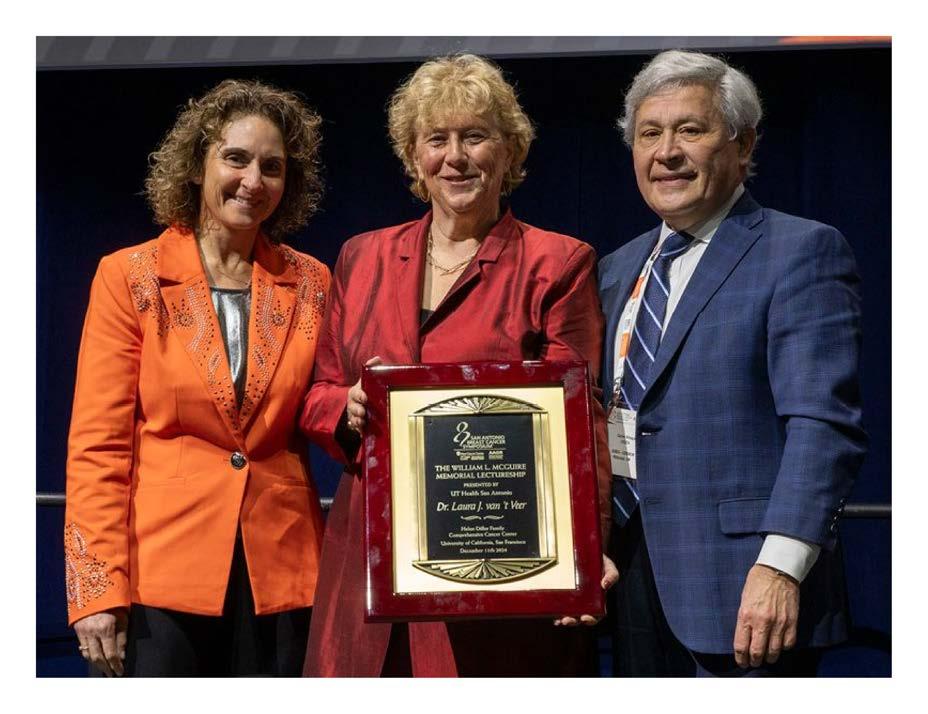


Founded on cutting-edge science and an unrelenting commitment to patients, Agendia’s mission was clear from the start. They wanted to provide women diagnosed
with early-stage breast cancer with something that had been missing for too long: clarity. Clarity about their disease, clarity about their treatment options, and, most importantly, clarity about their future. The founders believed that the biology of the tumor held the key to unlocking these answers, and they set out to develop genomic technologies that could reveal them.
Agendia’s breakthrough came in the form of MammaPrint®, a revolutionary 70-gene breast cancer recurrence assay. It wasn’t just another diagnostic tool—it was a game-changer. MammaPrint® became the first and only FDA-cleared risk of recurrence test, backed by extensive peer-reviewed data. It had the power to predict whether a patient’s cancer was likely to return, giving physicians and patients the confidence to make informed decisions about the necessity of chemotherapy.
Not long after, Agendia introduced BluePrint®, an 80-gene molecular subtyping assay. Unlike traditional methods that only focused on the presence of cancer, BluePrint® looked deeper—right into the biology of the tumor itself. By examining the molecular makeup of the cancer, BluePrint® could identify what was driving its growth, whether it was a hormone receptor-positive, HER2-positive, or basal-type tumor. This information proved invaluable, guiding the development of personalized treatment plans that addressed the root of the disease.
Together, MammaPrint® and BluePrint® formed a comprehensive genomic profile, giving physicians the tools to tailor treatments more precisely than ever before. Suddenly, it wasn’t just about fighting cancer—it was about fighting it smarter.
Imagine being told that you have breast cancer—a diagnosis that shakes your world to its core. You’re left with endless questions and daunting choices. For many women, the fear of recurrence looms like a dark cloud. Should they undergo chemotherapy despite the potential side effects? Or would a more conservative approach be just as effective?
Agendia’s tests bring light to this uncertainty. By analyzing the tumor’s genomic profile, doctors can better
predict recurrence risk and understand the biological nature of the cancer. It’s no longer just about statistics or general guidelines—it’s about personalized insights rooted in the unique genetics of each patient’s tumor.
These advancements don’t just offer better treatment—they offer peace of mind. Women who don’t need chemotherapy can confidently choose to forgo it, while those at higher risk can be treated aggressively from the start. It’s a balance of science and compassion—a combination that defines Agendia’s approach.
Guiding this transformative journey is Mark R. Straley, Agendia’s CEO since 2015. With over 25 years of experience in clinical diagnostics and laboratory services, Straley understands the profound impact that precision medicine can have on patients’ lives.
Before joining Agendia, Straley made his mark at some of the biggest names in the healthcare industry, including Thermo Fisher Scientific, Metamark Genetics, Ortho Clinical Diagnostics, Bayer Healthcare, and Abbott Laboratories. His leadership has not only solidified Agendia’s reputation as a pioneer in oncology diagnostics but also fueled its global expansion and continued research into personalized medicine.
For Straley, the mission is personal. “We do this for the people who have to watch their mother or daughter go through a debilitating disease,” he once said. “For the women who don’t need treatment, but do it anyway.” This commitment to patients drives Agendia’s relentless pursuit of better solutions and more meaningful data.
Agendia’s dedication to innovation doesn’t stop with diagnostics. The company has forged partnerships with academic institutions and cancer centers around the world, creating a vast network of research collaborations. Key clinical trials, including I-SPY2 and the FLEX Study, are setting new standards for how breast cancer is understood and treated.
Through these collaborations, Agendia is not only developing next-generation tests but also ensuring that their technology reaches more patients globally. From
Europe and Latin America to Asia, the company is pushing boundaries and expanding access, allowing more women to benefit from precise and personalized care.
Agendia’s groundbreaking work has earned it recognition on multiple fronts. In 2020, the company was named one of “America’s Fastest-Growing Private Companies” on the INC 5000 list. Additionally, Agendia received prestigious awards from:
▪ The American Society of Breast Surgeons Foundation
▪ The American Medical Association
▪ AACR for Outstanding Investigator in Breast Cancer Research
Co-founder Laura van ‘t Veer was inducted into the 2020 class of Giants of Cancer Care, and also received the European Union Women Innovator Award. Meanwhile, co-founder René Bernards was honored as an international member of the National Academy of Sciences (NAS).
These accolades reflect not only Agendia’s scientific achievements but also the company’s unwavering dedication to patient-centered innovation.
Agendia is more than just a biotechnology company—it’s a beacon of hope for women facing one of life’s toughest battles. As the company continues to develop innovative genomic tests and expand its global reach, it remains grounded in a mission that transcends profit and prestige: empowering women with the knowledge and tools to make the best possible treatment decisions.
By combining compassionate care with cutting-edge science, Agendia is revolutionizing breast cancer treatment. And as they continue to push the limits of what’s possible in precision oncology, one thing remains clear—their story is far from over.


Life is shaped less by what happens to us and more by how we choose to respond. You can heal, thrive, and embrace a ful lling life once more—because hope exists beyond what meets the eye, asserts Dr. Eve Wiltshaw.

Facing cancer is like balancing on a seesaw—it’s about finding strength in every shift and movement,” says Dr. Eve Wiltshaw, a pioneering force in the field of medical oncology. As a consultant physician at the Royal Marsden Hospital, she played a pivotal role in advancing cancer treatment, particularly through her groundbreaking work with the chemotherapy drug cisplatin. Her commitment to research, patient care, and leadership left an enduring legacy in oncology. This article explores her remarkable career, highlighting her contributions to cancer research, patient treatment, and the establishment of a multidisciplinary approach to oncology care.
How Dr. Eve Wiltshaw Pioneered Modern Cancer Treatments?
Eve Wiltshaw was born on January 23, 1927, in the United Kingdom. She came from a family with a strong
entrepreneurial background—her father, Cuthbert Frederick Wiltshaw, managed the renowned British pottery brand, Carlton Ware. Eve’s academic journey began at Gloddaeth Hall boarding school in North Wales, followed by medical studies at the University of Wales. Her early training included medical posts in South Wales and Birmingham, and she also gained international experience in hematology at Tufts University in Boston, USA.
Dr. Wiltshaw’s research focused on improving chemotherapy treatment for cancer patients. One of her most significant contributions was the introduction of cisplatin in the UK.
Cisplatin, a platinum-based chemotherapy drug, was first administered to patients in the United Kingdom by Dr. Wiltshaw’s team. The trials at the Royal Marsden Hospital demonstrated its effectiveness, particularly in treating ovarian cancer, leading to its widespread

adoption. Cisplatin became a cornerstone of chemotherapy, revolutionizing treatment for testicular, bladder, lung, and other cancers.
Her published research on cisplatin’s efficacy and its role in combination therapies provided invaluable insights that guided oncologists worldwide. The drug’s success significantly improved survival rates, marking a major advancement in oncology.
Beyond her work with cisplatin, Dr. Wiltshaw was instrumental in developing new treatment protocols
for sarcoma patients. She helped establish the Sarcoma Unit at the Royal Marsden, introducing a multidisciplinary team (MDT) approach that brought together oncologists, surgeons, radiologists, and pathologists. This collaboration ensured that sarcoma patients received comprehensive care, improving outcomes and setting a precedent for cancer treatment worldwide.
Dr. Wiltshaw’s influence extended beyond research—she was also a trailblazing leader in medical oncology. In 1986, she became the
first medical director of the Royal Marsden Hospital, a remarkable achievement for a woman in that era. Her tenure saw the expansion of oncology research, improved patient care protocols, and the strengthening of multidisciplinary treatment approaches.
In recognition of her contributions to cancer care, she was awarded the Order of the British Empire (OBE) in 1992. The Wiltshaw Ward at the Royal Marsden was named in her honor in 1991 and continues to serve cancer patients today.
Dr. Wiltshaw’s work continues to influence oncology research and treatment. Her studies on chemotherapy’s effectiveness, her role in developing treatment guidelines, and her dedication to patient-centered care have inspired generations of oncologists. She passed away on May 13, 2008, but her contributions to medical oncology remain invaluable.
Dr. Eve Wiltshaw’s pioneering work in oncology, her leadership in medical research, and her commitment to improving cancer treatment cement her place as one of the most influential figures in medical oncology. Her research on cisplatin changed the landscape of chemotherapy, while her efforts in establishing multidisciplinary oncology care set new standards for patient treatment. Her legacy lives on through the continued advancements in cancer research and patient care inspired by her groundbreaking work.
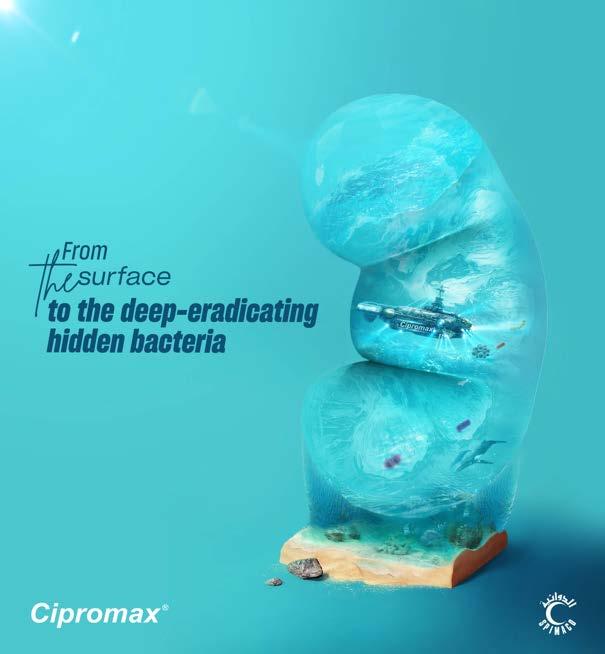



but prevented altogether. This is the story of VAXiCAN—a cutting-edge biotech company that is rewriting the rules of cancer immunotherapy through groundbreaking innovation and unwavering determination.
Founded in 2019, VAXiCAN emerged from a simple yet profound idea: to teach the body’s immune system to recognize and eliminate cancer cells just as it would a
viral threat. Headquartered in the heart of the biotech research community, this pre-clinical stage company has dedicated itself to developing next-generation immunotherapeutics that challenge traditional treatment paradigms.
At the core of VAXiCAN’s approach is their Enveloped Virus-Like Particle (Enveloped VLP) platform. Unlike conventional cancer vaccines that struggle with effective antigen presentation, VAXiCAN’s VLPs are designed to mimic viral infections. By presenting the extracellular domains of cancer antigens and utilizing pathogen-associated molecular patterns (PAMPs), their vaccines stimulate the body’s adaptive immune response. This strategy not only produces high-affinity antibodies and cytotoxic T cells but also actively recruits natural killer cells and supports long-lasting memory cells.
Imagine equipping the immune system with a cancer “memory” so that even the most aggressive tumors are recognized as foreign invaders. VAXiCAN’s vaccines promise to do just that—transforming cancer from a feared disease into a preventable condition.
Behind VAXiCAN’s pioneering innovations is a visionary leader: Łukasz Rąbalski. As the CEO of VAXiCAN and an Assistant Professor at the University of Gdańsk and the Military Institute of Hygiene and Epidemiology, Rąbalski’s journey is rooted in a profound commitment to scientific advancement and practical healthcare solutions.
An alumnus of Harvard Medical School’s Postgraduate Medical Education program, Rąbalski is an expert in the field of biotechnology and immunology. His leadership at VAXiCAN is not just about groundbreaking research—it’s about translating scientific discoveries into real-world healthcare solutions. Rąbalski’s dual role as a scientist and a leader has been fundamental to shaping VAXiCAN’s mission and vision.
His extensive background in dangerous pathogen diagnostics and expertise in bioinformatics have equipped him to lead the company’s dual focus on immunotherapeutics and genomic analysis. At VAXiCAN, research is not confined to the lab; it’s a relentless pursuit of medical breakthroughs that change lives.
When it comes to cancer treatment, innovation is the heartbeat of progress. But what sets VAXiCAN apart from the multitude of biotech startups promising cures and miracles? The answer lies in their unconventional approach to virus-like particles.
Most cancer vaccine platforms rely on mammalian, fungal, or synthetic models. VAXiCAN, however, has chosen a different path, using naturally occurring or genetically modified oncolytic viruses with an innovative antigen delivery method based on insect models. This novel technique significantly enhances the presentation of cancer antigens and boosts the adaptive immune response.
Think of it as crafting a trojan horse that not only infiltrates the enemy lines but also trains the immune army to attack decisively. By leveraging artificial intelligence (AI) and machine learning (ML)—developed entirely in-house—VAXiCAN has optimized the identification of target antigens and the design of therapeutic candidates.
Their first pre-clinical lead candidates are focused on HER2 and GD2 cancers, including breast cancer, neuroblastoma, and melanoma. These cancers are notorious for their resistance to conventional therapies, making VAXiCAN’s VLP-based approach a game-changer. Additionally, their work on HPV/HBV-related cancers could potentially yield two first-in-class drug candidates and at least one in the orphan drug and fast-track regulatory designations.
While the primary focus of VAXiCAN is to revolutionize cancer immunotherapy, the company’s expertise extends beyond therapeutics. As a certified partner of Oxford Nanopore Technologies, VAXiCAN is at the forefront of genomic and next-generation sequencing (NGS).
Their capabilities include comprehensive bioinformatic analysis of full genomes, covering everything from bacteria and bacteriophages to human and animal viruses. In an era where genomic data drives precision medicine, VAXiCAN’s ability to map full human genomes offers invaluable insights that can support not only cancer vaccine development but also broader applications in infectious disease research.
This dual approach allows VAXiCAN to stay agile in the rapidly evolving biotech space, making them not only a leader in cancer immunotherapy but also a pioneer in genomic innovation.
Cancer remains a relentless adversary, claiming nearly 10 million lives annually. While immunotherapy has made significant strides, it is still largely reserved for late-stage diseases, often viewed as a last resort rather than a first line of defense. VAXiCAN is determined to change this narrative by developing preventive vaccines that can preempt cancer development altogether.
“We wanted to produce next-generation immunotherapeutics that work as a prophylactic vaccine against cancer,” says Rąbalski. “Our goal is to teach the immune system how to recognize cancer cells and stimulate both humoral and cellular responses.”
The mission is clear: to develop vaccines that not only treat cancer but prevent it from ever taking hold. By equipping the immune system with the tools to fight cancer cells as if they were viral pathogens, VAXiCAN is charting a bold new course in oncology.
As VAXiCAN continues to advance its pre-clinical candidates and gears up for clinical trials, the company remains grounded in its mission to make cancer prevention a reality. Their VLP technology, genomic expertise, and AI-driven innovation set them apart as a visionary leader in the biotech space.
The dream of cancer eradication may have seemed far-fetched in the past, but VAXiCAN’s pioneering work brings it closer to reality. Armed with a dedicated team of scientists and the relentless pursuit of innovation, VAXiCAN is shaping a future where cancer can be prevented just as infections are controlled today.
In the world of next-generation cancer vaccines, VAXiCAN is not just participating in the revolution—it is leading it.
Website: www.vaxican.com



CAR-T cell therapy has become a cornerstone in the immuno-oncology playbook, particularly for hematologic malignancies. But despite significant clinical success, the first generation of CAR-T therapies has yet to reach its full potential—especially in the context of solid tumors, scalability, and safety.
As biotech companies and research institutions push the boundaries of cell engineering, we’re now entering the era of Engineering T Cells 2.0: a new phase defined by sophisticated genetic circuitry, next-gen delivery platforms, and enhanced tumor microenvironment navigation.
This article explores the cutting-edge innovations shaping the next chapter of CAR-T therapy and what they mean for biotech R&D and commercialization strategy.
CAR-T cell therapy involves engineering a patient’s own T cells to recognize and kill cancer cells. This is achieved by inserting a synthetic receptor—known as a chimeric antigen receptor—onto the T cell’s surface. These receptors are designed to target specific proteins in cancer cells, enabling T cells to identify and destroy them.
Since the FDA approved the first CAR-T therapies (like Kymriah and Yescarta) in 2017, the field has rapidly evolved. But despite groundbreaking success in blood cancers like leukemia and lymphoma, CAR-T’s efficacy in solid tumors remains a significant hurdle.
CAR-T therapies like Novartis’ Kymriah, Gilead’s Yescarta, and Bristol Myers Squibb’s Breyanzi have demonstrated impressive outcomes in B-cell malignancies. However, several well-documented limitations persist:
▪ Limited efficacy in solid tumors
▪ Toxicities, including cytokine release syndrome (CRS) and neurotoxicity
▪ Antigen escape and tumor heterogeneity
▪ Manufacturing complexity and high COGs
▪ Time-sensitive autologous workflows
These issues have catalyzed a wave of innovation across biotech R&D teams, aimed at engineering smarter, safer, and more scalable cell therapies.
Antigen loss remains a major escape mechanism for tumors. Biotech firms are investing in dual-targeting CARs (e.g., CD19/CD22 or CD19/CD20) and tandem CARs to address this challenge. By enabling T cells to recognize multiple tumor-associated antigens, these constructs reduce relapse risk and may broaden indications.
Implication for R&D: Preclinical platforms that allow rapid screening of multi-antigen combinations are in high demand. Vector payload capacity and optimal antigen pairing will become differentiators in development pipelines.
So-called “armored CAR-Ts” are being engineered to co-express:
•Pro-inflammatory cytokines (e.g., IL-12, IL-15)
•Checkpoint blockade molecules
•Dominant-negative receptors to counter immunosuppressive signals (e.g., TGF-β)
These modifications enhance persistence and function in immunosuppressive microenvironments, especially within solid tumors.
Industry example: Celyad and Caribou Biosciences are developing next-gen armored platforms with gene-editing-enhanced function and durability.
Autologous production constraints have opened the door to allogeneic “off-the-shelf” CAR-T development. Using CRISPR, TALENs, or base editors, companies are eliminating TCR and HLA expression to prevent graft-versus-host disease (GvHD) and host rejection.
Strategic edge: Allogeneic products offer lower manufacturing costs, batch scalability, and rapid turnaround—an attractive model for broader commercial viability.
Notable players: Allogene Therapeutics, Precision BioSciences, and Adaptimmune are pioneering platforms to generate universal donor-derived CAR-Ts.
4. Overcoming the Tumor Microenvironment (TME)
The immunosuppressive TME remains the biggest barrier to efficacy in solid tumors. Research is now focused on modifying T cells to:
•Secrete enzymes (e.g., heparanase) that degrade the extracellular matrix
•Resist exhaustion and inhibitory signals
•Improve homing and infiltration via chemokine receptor engineering
Emerging solutions: Combining CAR-T therapy with oncolytic viruses or TME-modulating agents is gaining traction in preclinical and early-phase trials.
Next-gen CARs are integrating synthetic biology-based logic gates that control T-cell activation based on complex input signals:
▪ AND gates require the presence of two antigens
▪ NOT gates prevent activation in healthy tissue
▪ SynNotch receptors allow for sequential antigen recognition
These systems offer higher tumor specificity and reduced toxicity, which are critical for translating CAR-T into solid tumors and high-risk indications.
Investment insight: Companies like Synthekine and Gemoab are advancing modular CAR architectures leveraging these circuits.
Translational and Regulatory Momentum
The FDA’s RMAT designation and EMA’s PRIME designation are accelerating review timelines for innovative cell therapies. However, as therapies become more complex, regulatory clarity around gene-editing, multiplexing, and synthetic constructs will be crucial.
Manufacturing innovation is also key. Companies developing closed-loop systems, automated bioreactors, and digital QC platforms are helping reduce variability and accelerate GMP-scale production.
Though oncology remains the primary focus, engineered T cells are making inroads into:
▪ Autoimmune diseases (e.g., CAR-T for SLE and MS)
▪ Infectious diseases (e.g., HIV, hepatitis)
▪ Fibrosis and metabolic disorders
This shift opens the door for biotech players to diversify their pipelines and extend IP beyond oncology.
The global CAR-T cell therapy market is projected to exceed $25 billion by 2030, with more than 600 active clinical trials worldwide, according to market analysis. Strategic M&A activity, cross-platform collaborations, and hybrid therapeutic models (e.g., CAR-T + bispecifics or CAR-T + ADCs) are emerging trends to watch. Growth is being fueled by:
•Increased clinical trial activity
•Success in new indications (especially solid tumors)
•Strategic collaborations between biotech and pharma giants
Big players like Gilead, Novartis, Bristol Myers Squibb, and newer entrants are investing heavily in next-gen platforms.
CAR-T therapy has already made history in oncology, but the story is far from over. Engineering T Cells 2.0 is poised to overcome key barriers, making this treatment more effective, accessible, and safe for a broader range of patients.
From smart CAR designs and universal donor cells to armored T cells breaking through solid tumors, the future of cancer therapy is not just personalized—it’s precision-engineered.
As the field advances, oncologists and researchers alike are watching closely: CAR-T may not only be a cure for some cancers—it could be the blueprint for curing many more.
Engineering T Cells 2.0 marks a critical inflection point in the evolution of cell therapy. As biotech companies develop smarter, more adaptable CAR-T platforms, the promise of durable responses in solid tumors—and even non-oncologic conditions—comes closer to reality.
For R&D leaders, the mandate is clear: invest in multi-modal platforms, streamline manufacturing, and integrate synthetic biology principles to future-proof your pipeline. The next generation of CAR-T isn’t just about treating cancer—it’s about reprogramming immunity with surgical precision.


Take advantage of every single edition, and get Global Biz Outlook Magazine in Print and digital at www.globalbizoutlook.com.
Subscribe to Global Biz Outlook Magazine, and Read It Now.
Global Subscription
1 Month (1 Issues): $ 253 Months (3 Issues): $ 70
Subscription Form
6 Months (6 Issues): $ 1501
Year (12 Issues): $ 250
Kindly fill out the form below and email/courier it in favor of Global Biz Outlook Magazine. Fill out this form, and we will call you.
Name:
Address:
Company:
Contact Number: Email:
City: State:
Zip: Country:
Global Biz Outlook Magazine
1330 Valley Lake Dr Apt 305 Schaumburg 60195 Illinois, United States info@globalbizoutlook.com +1-847-852-4574
For more information, click on www.globalbizoutlook.com


